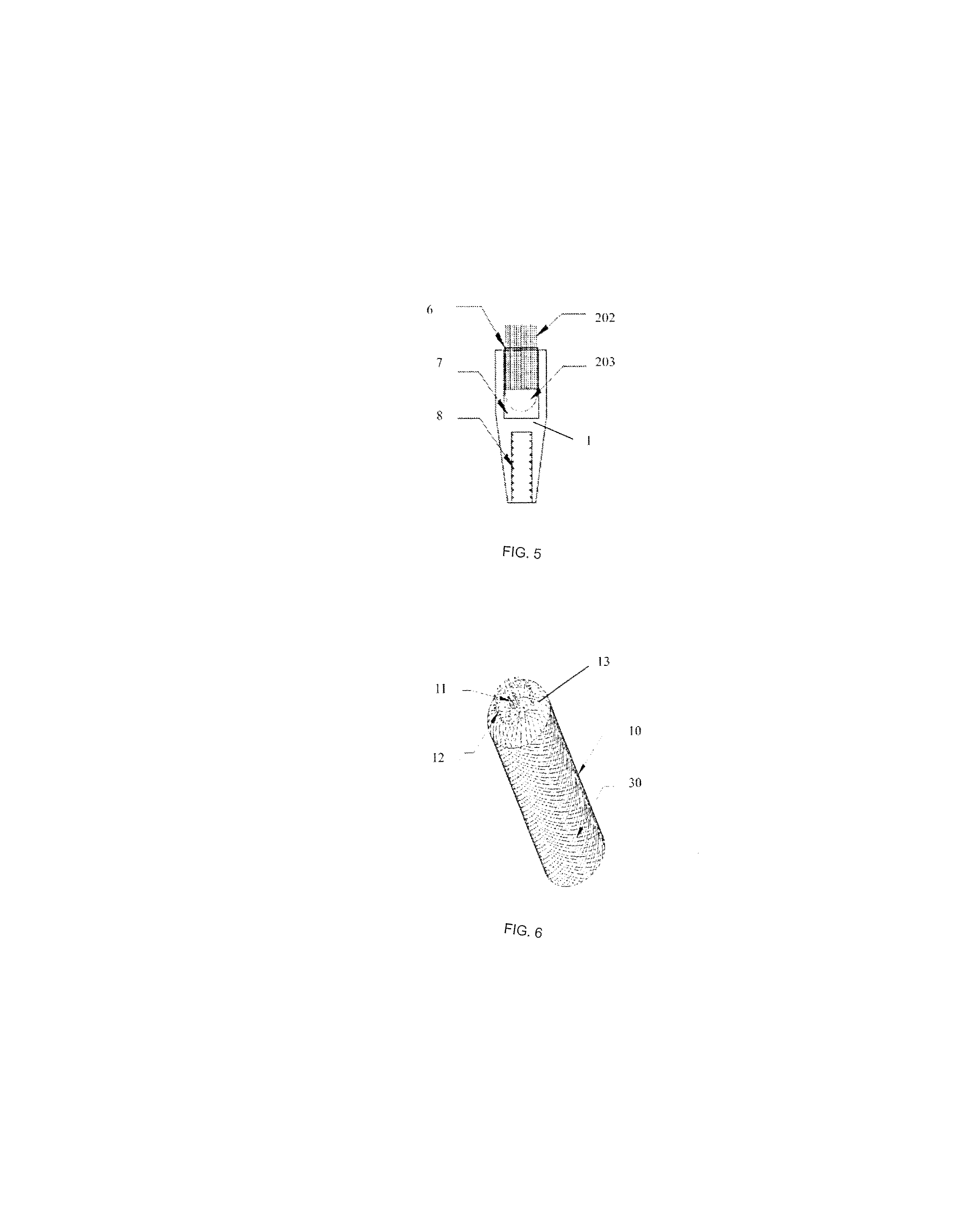Occlusion Device and Method for its Manufacture
a technology of occlusion device and manufacturing method, which is applied in the field of medical device and the manufacturing, can solve the problems of increasing the risk of metal wire breaking at that location, affecting the physiological environment of surrounding tissues, and obvious structural defects, so as to reduce the amount of metal released by the occluder over the long term, facilitate epithelialization, and reduce the resistance of entering the sheath.
- Summary
- Abstract
- Description
- Claims
- Application Information
AI Technical Summary
Benefits of technology
Problems solved by technology
Method used
Image
Examples
embodiment 1
[0076]As shown in FIG. 6, nickel-titanium alloy wires are first used to braid a metal mesh tube 30 on a cylindrical metal molded rod 10. A braiding chuck 13 is provided in the head part of molded rod 10. Holes are formed on two concentric circles around the axis of molded rod 10. Twelve holes are arranged symmetrically with respect to the axis on the first circle. Twenty-four holes are arranged on the outer second circle. Twelve rays are led out from the center of the circle to the twelve holes on the inner circle and cross with the outer circle at twelve points. These twelve points and the twenty-four holes on the outer circle are uniformly distributed on the outer circle. There are two holes between two adjacent points. A two-stage braided mesh is formed in this embodiment. Therefore, it is necessary to form. two circles of holes on braiding chuck 13. Similarly, a plurality of circles of holes can be formed for a multistage braided mesh, and the braiding method is also similar.
[00...
embodiment 2
[0081]The second embodiment of the present invention is modified based on the first embodiment. When placing the first-stage wires 21, one of the first-stage wires penetrates the bent parts of all the other first-stage wires on the first-stage wire hanging bars 11. This first-stage wire is hung on the corresponding first-stage wire hanging bar 11 after it forms a ring around the other first-stage wire hanging bars 11 on the same circle, followed by starting braiding of the first-stage braided mesh 221, as shown in FIG. 20. The steps thereafter are basically the same as those of the first embodiment except that the step of using suture thread 70 to connect opening 32 is omitted, because the same objective can be achieved by the second embodiment.
embodiment 3
[0082]The third embodiment is modified based on the first embodiment of the present invention. The first several steps are exactly the same as those of the first embodiment. When placing the second-stage wires 22, each second-stage wire 22 forms a small ring around one second-stage wire hanging bar 12, followed by braiding the two formed branches of each wire as shown in FIG. 21. The steps thereafter are exactly the same as those of the first embodiment. When the wires are bent into small rings, they are difficult to break during compressive deformation so that the safety of the metal mesh can be improved. The suture thread can also easily penetrate these small rings.
PUM
 Login to View More
Login to View More Abstract
Description
Claims
Application Information
 Login to View More
Login to View More - R&D
- Intellectual Property
- Life Sciences
- Materials
- Tech Scout
- Unparalleled Data Quality
- Higher Quality Content
- 60% Fewer Hallucinations
Browse by: Latest US Patents, China's latest patents, Technical Efficacy Thesaurus, Application Domain, Technology Topic, Popular Technical Reports.
© 2025 PatSnap. All rights reserved.Legal|Privacy policy|Modern Slavery Act Transparency Statement|Sitemap|About US| Contact US: help@patsnap.com



